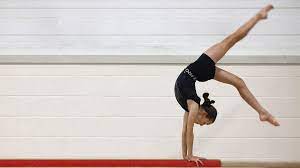The moment a child sticks their landing after a handstand, something important clicks—not just in their limbs, but in their brain. While gymnastics might look like flips and cartwheels to the untrained eye, for growing kids, it’s quietly shaping focus, discipline, and mental clarity that flows directly into their performance at school.
Why Movement Fuels Concentration
Children are built to move. It’s through movement that they explore boundaries, build strength, and develop spatial awareness. But beyond the physical, activities like gymnastics for kids activate parts of the brain linked to focus and learning. The coordination needed to perform routines strengthens the neural pathways that manage memory, attention span, and cognitive flexibility.
Recent studies have shown that physical activity helps increase blood flow to the brain, improving mental alertness and information processing. Harvard Health highlights the link between exercise and sharper thinking in both children and adults. And few sports demand as much concentration-per-minute as gymnastics.
Structure and Routine Build Habits That Stick
Children thrive on structure, and gymnastics offers it in spades. Every session starts with a warm-up, progresses through skill-building drills, and ends with cool-down routines or reflection. This repetition helps develop discipline that kids often carry over to other areas of life—homework included.
For kids who struggle with attention in the classroom, these rhythmic, goal-focused sessions provide a scaffold. They learn to set objectives (“land the round-off”), work incrementally, and handle feedback in real time. Over time, this reinforces a growth mindset, where effort and persistence are tied to outcomes.
In many ways, learning a gymnastics sequence is similar to tackling a maths problem: there’s an order, logic, and satisfaction in getting it right.
Focus Is Built Through Micro-Movements
Balance beams, rings, and floor routines all require incredible concentration. One wobble and the sequence can falter. In gymnastics, kids must quiet outside distractions and tune into their body’s signals—something few other sports demand so acutely.
This kind of concentration—intentional, sustained, and internal—is precisely the type that supports success in structured environments like school. It’s no coincidence that kids who train in gymnastics for kids often show improved classroom behaviour and better self-regulation.
Plus, gymnastics trains short bursts of focus that can be extended over time. Just as a student builds the ability to sit through a 40-minute lesson, a young gymnast trains to hold a pose or repeat a sequence with increased duration and accuracy.
Social Skills and Self-Esteem Are Hidden Benefits
While gymnastics is often viewed as an individual sport, classes are almost always group-based. Children learn to wait their turn, encourage peers, and celebrate progress—skills that translate directly into the schoolyard and beyond.
The sense of achievement that comes from mastering even a single move boosts confidence. And kids who feel capable are more likely to take on challenges in other areas. This ripple effect from gym to classroom is one reason why so many families stick with gymnastics for years.
Mixing Movement With Fun Keeps Minds Engaged
Let’s be honest—kids don’t always want to sit still. And that’s okay. Instead of forcing them into stillness, gymnastics offers a way to channel energy productively.
When routines are designed with both fun and challenge, children are more likely to stay motivated and mentally present. This kind of engagement keeps the brain firing in all the right ways. And the thrill of finally landing a skill after weeks of practice? That kind of intrinsic reward stays with them—long after the mats are packed away.
From Somersaults to School Projects: It’s All Connected
The connections between body and mind are clearer than ever. As schools look for more ways to support student wellbeing, parents are turning to programs that do more than just wear kids out—they want something that complements learning and emotional development.
Whether it’s helping a child manage anxiety, build resilience, or improve motor planning, gymnastics for kids can quietly do the heavy lifting. It might not be listed on the school curriculum, but its effects show up in better behaviour, improved memory, and greater task persistence.
And let’s not forget the crossover benefits with other sports. Gymnastics strengthens the core, improves coordination, and sharpens reaction time—skills that give children an edge whether they’re sprinting on a field or playing gymnastics for kids-style indoor sports like gymnastics for kids.
The Bigger Picture: Mental Agility Through Physical Play
Just as gymnastics for kids improves physical agility, it equally fosters mental agility. Kids learn to make quick decisions—should I bail or push through? They learn to cope with pressure, manage disappointment, and celebrate small wins.
These life lessons, often gained while barefoot on a mat, lay the groundwork for calm under pressure—an essential skill, whether facing exams or playing a high-focus game like gymnastics for kids.
Gymnastics is, at its core, the art of calculated movement. And kids who practise this art tend to approach everything else with that same balance of poise and persistence.
Final Thoughts
Gymnastics is more than a sport—it’s a training ground for focus, resilience, and joy in movement. For school-aged children, the benefits stretch far beyond the gym floor. They’re seen in the classroom, on the playground, and even in how they interact with the world around them.
Whether your child is flipping into foam pits or navigating their way through their first routine, they’re doing more than building strength. They’re learning how to pay attention, commit to goals, and stay grounded—both literally and figuratively.
And if they carry that mindset into the next PE class, or even a fast-paced indoor sport like gymnastics for kids, they’re already ahead of the game.

